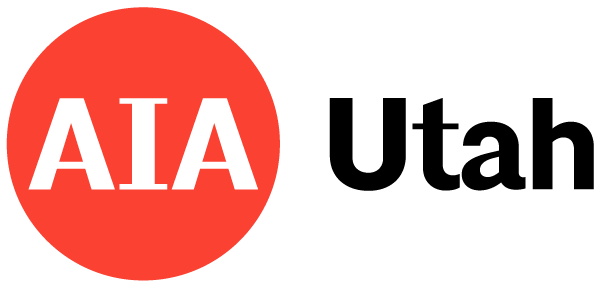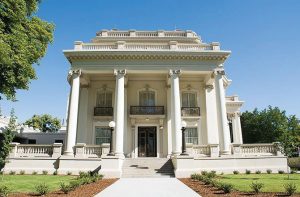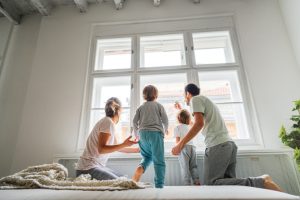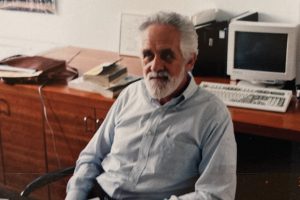Flexibility and perseverance.
Those are the bywords that got architectural firms of all sizes through 2020.
In a panel discussion, David Haresign, FAIA, (founding partner of Bonstra | Haresign ARCHITECTS) and Barbara Campagna, FAIA, (Principal — Barbara A. Campagna/Architecture + Planning, PLLC) shared how they navigated an unprecedented year.
For Haresign’s 32-person firm, 2020 was set to be a landmark year. To celebrate its 20th anniversary, the firm had planned parties, a book — even a bike tour of its most notable projects that revitalized DC communities. Instead, Haresign and his colleagues found themselves shifting to telework virtually overnight.
The transition certainly had its pros and cons.
“We found it extremely difficult in a collaborative, creative enterprise to be able to collaborate effectively,” he recalled. “We had to prepare as if we were doing on-screen presentations to clients [even] when we were doing simple internal collaboration.” The complications of virtual collaboration brought time-consuming “perfectionism and formality” to the internal review process.
Also lost was the spontaneous “learning by osmosis” the firm’s members benefited from when together. Bonstra | Haresign implemented a number of strategies to “maintain and reinforce culture” — including Monday morning coffee chats, monthly “staffy hours,” and weekly remote lunch-and-learns.
On the bright side, the level of effort and preparation required just to conduct day-to-day processes provided experience that impacted client presentations in a positive way. “It has forced organizational planning and discipline to our presentations that I hope we carry forward.” The response from clients? A “new politeness” in which clients allow more time for presentations and are more engaged and attentive.
For sole practitioner — or “solopreneur” — Campagna, the 2020 transition was equally abrupt. The Buffalo-N.Y.-based architect was celebrating her business’ 10th anniversary. And she had just finished moving into a new office space “designed to have a lot of parties and events” the very week New York went into lockdown. Campagna found herself working from home in a “business bubble” with her sister, a business consultant. To compensate for the sudden lack of in-person interaction, she “started participating in every online webinar and conference I could find,” which provided the “intellectual stimulation and participation with colleagues” she was missing.
The financial outlook was even more daunting. “Every single project I had stopped by the end of March,” Campagna recalled. “These were all projects with contracts I’d anticipated working on for the next one-to-five years. Needless to say, I was panicked that all of my billings were gone within a week, and I now had a big, fancy office to pay for and I couldn’t actually work there.”
Both Campagna and Haresign credited Paycheck Protection Program (PPP) loans, local micro-grants, and other programs for helping them weather 2020. “Thank goodness we were able to participate in PPP,” Haresign put it. Without such assistance, the firm would have been forced to “take a very hard look” at staff levels. Instead, the firm actually grew in 2020, increasing from 28 to 32 employees. For Campagna, these programs, plus technology grants from Erie County, allowed her to implement a planned update of equipment and technology that would prove critical to her business.
Finding new projects to replace those on hold required creativity, persistence — and patience. “It’s really been important to be nimble and figure out new things, to understand how to look for these grants and find funding when the funding you thought was going to come in immediately stops,” Campagna explained. “I found myself working on a variety of teams, developing a variety of proposals, and I got a whole new set of exciting projects. But it took a much longer process to submit proposals and get interviews — everything took longer.”
Both architects are now looking forward. Bonstra | Haresign is focused on transitioning back to full capacity in the office. “For the last year, we’ve been operating the most expensive server farm in the city,” Haresign noted. In line with CDC and local DC guidelines, the firm is gradually working up to 50% capacity this month — a pace it plans to accelerate after July 4th while considering ongoing flexibility for remote working. Integral to planning has been AIA DC’s Operations Professional Peer Committee, which has brought 10 local firms together to collaborate on re-entry methods.
On the project front, Bonstra | Haresign is well-positioned to adapt to post-COVID commercial architecture opportunities. The firm is already engaged in converting spaces — including schools and two 14-story office buildings — to residential space, and Haresign anticipates the firm’s preservation and conversion work will continue in line with trends — trends that include a strong multi-family residential market and a shift from market rate to affordable housing projects. “The retrofit world was already starting before COVID,” he commented, “And I think that trend is going to continue.” Bonstra | Haresign has picked up a number of new projects with non-profit groups, which Haresign describes as “very satisfying work.”
For Campagna, 2020 has inspired career reflection. “My biggest takeaway: to be flexible and to keep re-evaluating all the time — evaluating my projects, evaluating who I work with, evaluating how I actually do the work.” Inspired by her work on recent government-funded restoration projects, which proceeded in 2020 because funds were already allocated, she has a renewed focus on largescale projects that allow her to “do everything I love to do in one project” — from technical evaluation to design philosophy development to regulatory review. Campagna is also focused on supporting women by cultivating project “dream teams” that include women-led businesses.
For both architects, the bottom line is adaptability. “Things are moving fast and evolving every single day,” Haresign concluded. “This has been constant for a year and a half, and we’ve had to be nimble and adjust to what’s going on.”









